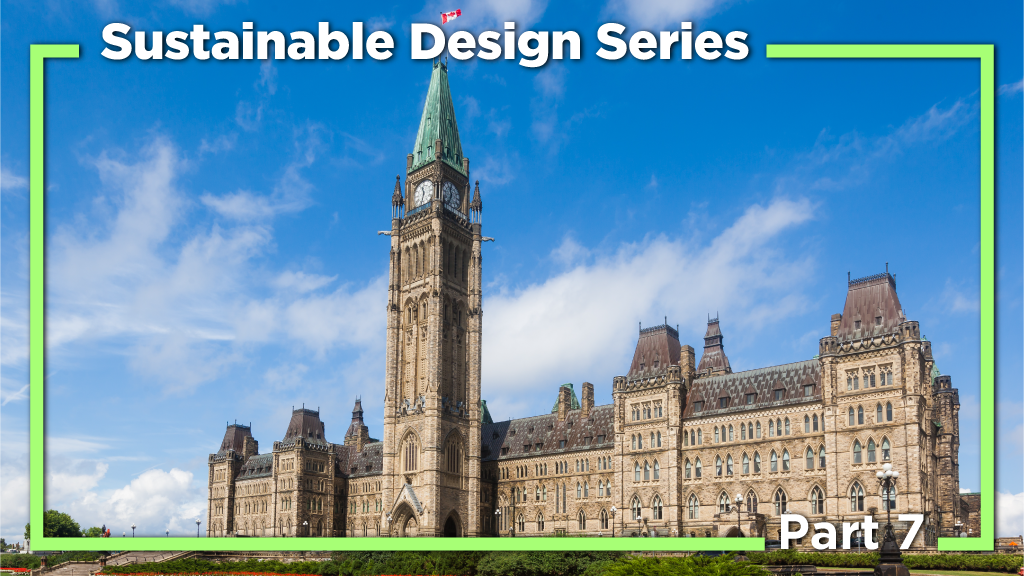In order to support our evolving lifestyles, humans are consuming far too many planetary resources and producing too much carbon.
We are in a phase called “Capacity Biodeficit,” where each of us consumes (on average) far more than the earth is capable of producing.
If everyone lived like the average American or Canadian, they would consume about four times the earth’s capacity to provide. And with industrialization and urbanization, aided by the widespread availability of information, countries around the world are trying to emulate the western consumption lifestyle. With increasing global temperatures boosting the use of air-conditioning, the environmental impacts will get worse.
We are on the negative side of the supply/demand equation. Not only are we extracting more resources than the earth can provide (excessive demand), we are also damaging earth’s ability to produce (constraining supply). Deforestation; pollution of the soil, water and air; desertification; depletion of underground water resources, etc. are all taking their toll.
In economic terms, less supply and more demand means rising prices, restricting the ability of many to afford once essential items and that could (and will) lead to social unrest.
Most politicians would go for a quick Band-Aid and ease the money supply and hope things will get solved by the next politician. This will make people feel richer in the short term, so an easy vote-winning fix.
It is political suicide in our consumer-spending driven economies to ask people to consume less and exert more effort to coax more output from the earth. It is not as commercially rewarding to be a farmer as it is to be an investment banker for example.
A market of limited supply produces inflation. If combined with a global recession, stagflation occurs. No matter which way you look at things, life as we are living it, is becoming — no pun intended — unsustainable.
A major contributor to this sad state of affairs is real estate. We need places to live, work, play. So we need space to build our homes, offices, schools; need roads to get us there; power stations, water and sewage treatment; fuel, raw materials and finished goods.
The decisions made by each individual developer building those 13,000 projects starting every day around the world dictate to society how much space we need, how many roads to build, how much water to treat, how much power to produce, how much fuel to import, etc.
Such is the reason why real estate development is directly responsible for 40 per cent of global energy and 33 per cent of global carbon emissions.
Each individual developer is happily privatizing the upside of building and owning real estate and socializing the downside environmental degradation of their decisions. Those decisions directly injure the environment and we are all paying for it.
The world is adopting renewable energy production with great urgency, with wind, solar, hydro and geothermal energy (I still have trouble calling nuclear energy “green”) contributing 11.41 per cent of primary produced energy (2019 data for electricity, heating and transport), compared to 6.04 per cent in 1965, a modest increase of 5.37 per cent in 54 years.
On a more optimistic note, 26.66 per cent of global electricity production comes from renewable energy sources, 20.83 per cent in 1985, up 5.83 per cent in 35 years.
In all honesty, I was very surprised with the 1965 figure for renewable primary energy as I expected it to be lower for some reason. I was even more surprised that all these impressive and well-publicized renewable “green” electricity initiatives resulted in less than a six per cent increase in 35 years.
The main reason for this surprisingly low level of achievement — notwithstanding all the publicity around green energy production — is that we have continued to build inefficiently.
So all that extra “green” energy still is following its fossil fuel cousins supplying the needs of our vastly inefficient buildings.
Rather than governments as a priority mandating lower energy consumption so that the energy produced is used more efficiently and renewable energy can make a bigger impact, there was a strong push to produce more green energy, such that green energy contribution towards energy consumed rose less than six per cent in 35 years.
How many civil wars, revolutions and invasions took place in order to keep fuel prices low, so that we can then burn that fuel to inefficiently heat and cool our homes and buildings. We perhaps use a quarter of the energy content of the fuel once it is delivered to us, and for every unit of energy we consume, we need to extract three units of energy. So, saving one unit of energy consumption, saves three energy units at the source.
To be continued in the next article.
This op-ed is the seventh in a series from Eco-Structures International’s founder and director Ghassan Nimry which focuses on innovative sustainable engineering solutions to today’s climate change problems. He believes that technology can solve many of today’s seemingly intractable problems, but to make it work we need collective work, personal acknowledgement of our role in the problem and our ability to be part of the solution.
Send comments to editor@dailycommercialnews.com.











Recent Comments
comments for this post are closed